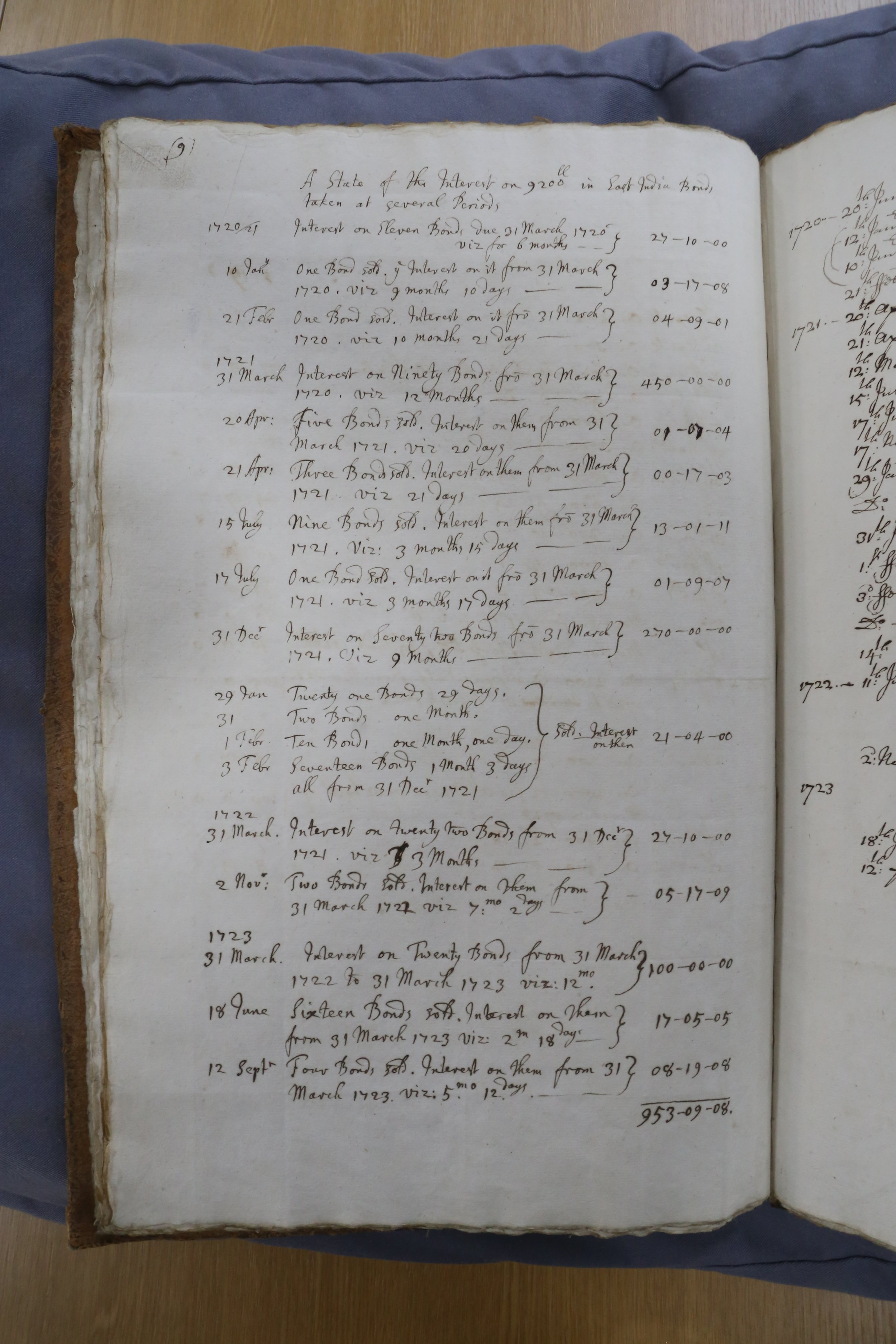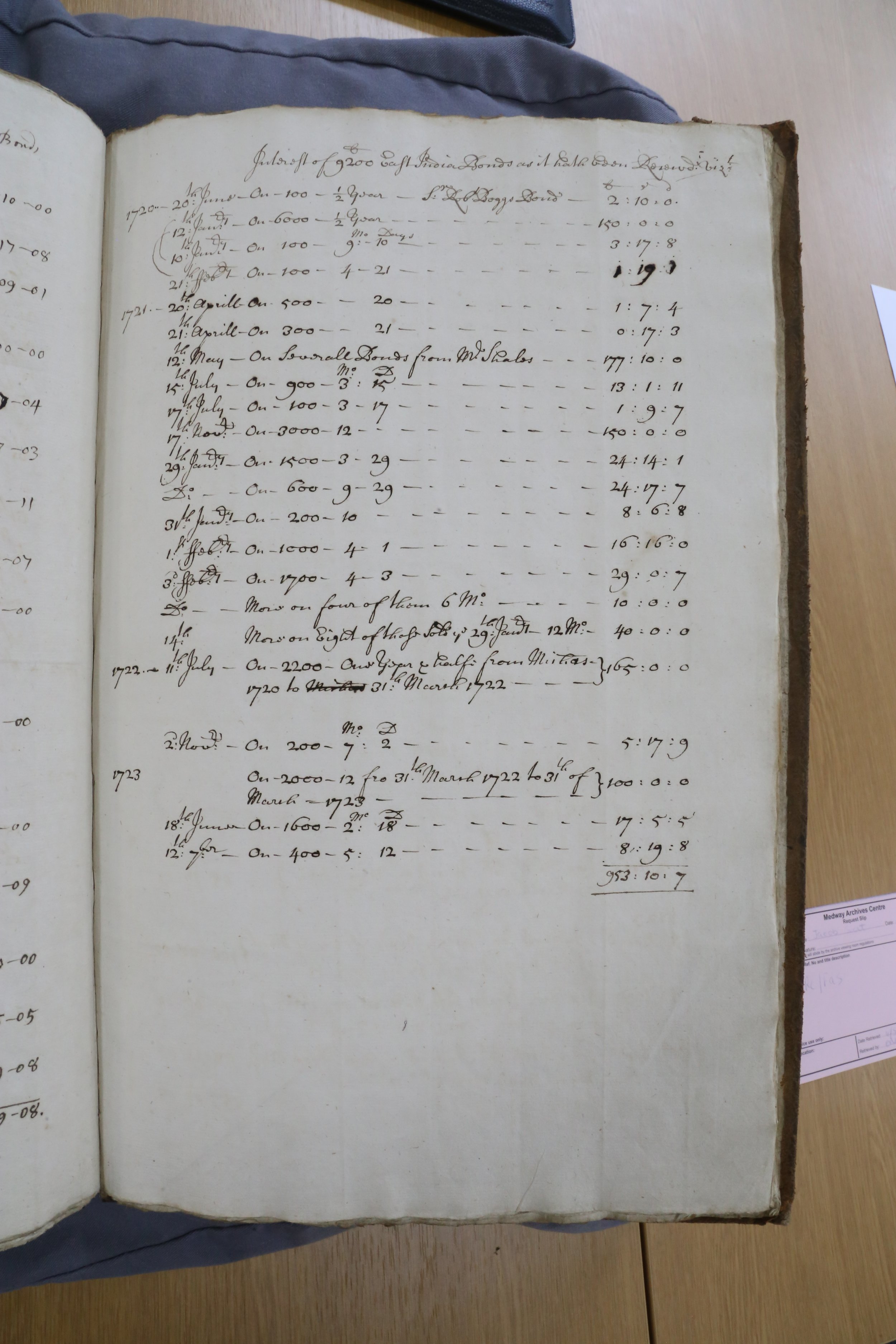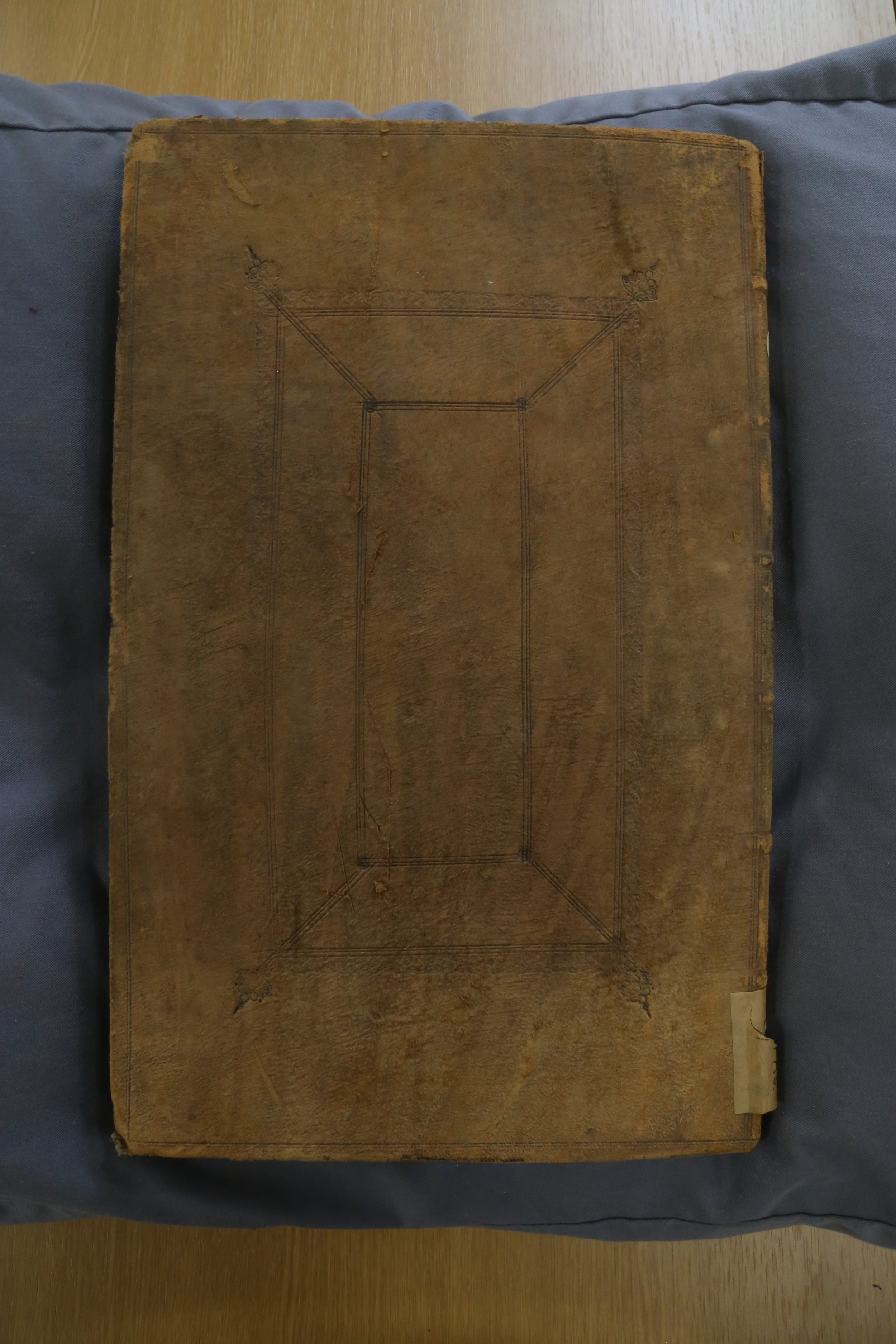Investments in the South Sea Company by the Dean & Chapter of Rochester Cathedral, 1715-1720
/The archives of the Dean & Chapter include a collection of early 18th-century stock and dividend receipts and an accounts book evidencing an extensive financial legacy from investments in two of the largest slave-trading companies in history.
This post features in our Colonial and Military series available through the Heritage page. For an introduction to the series see Rochester Cathedral and the British Empire.
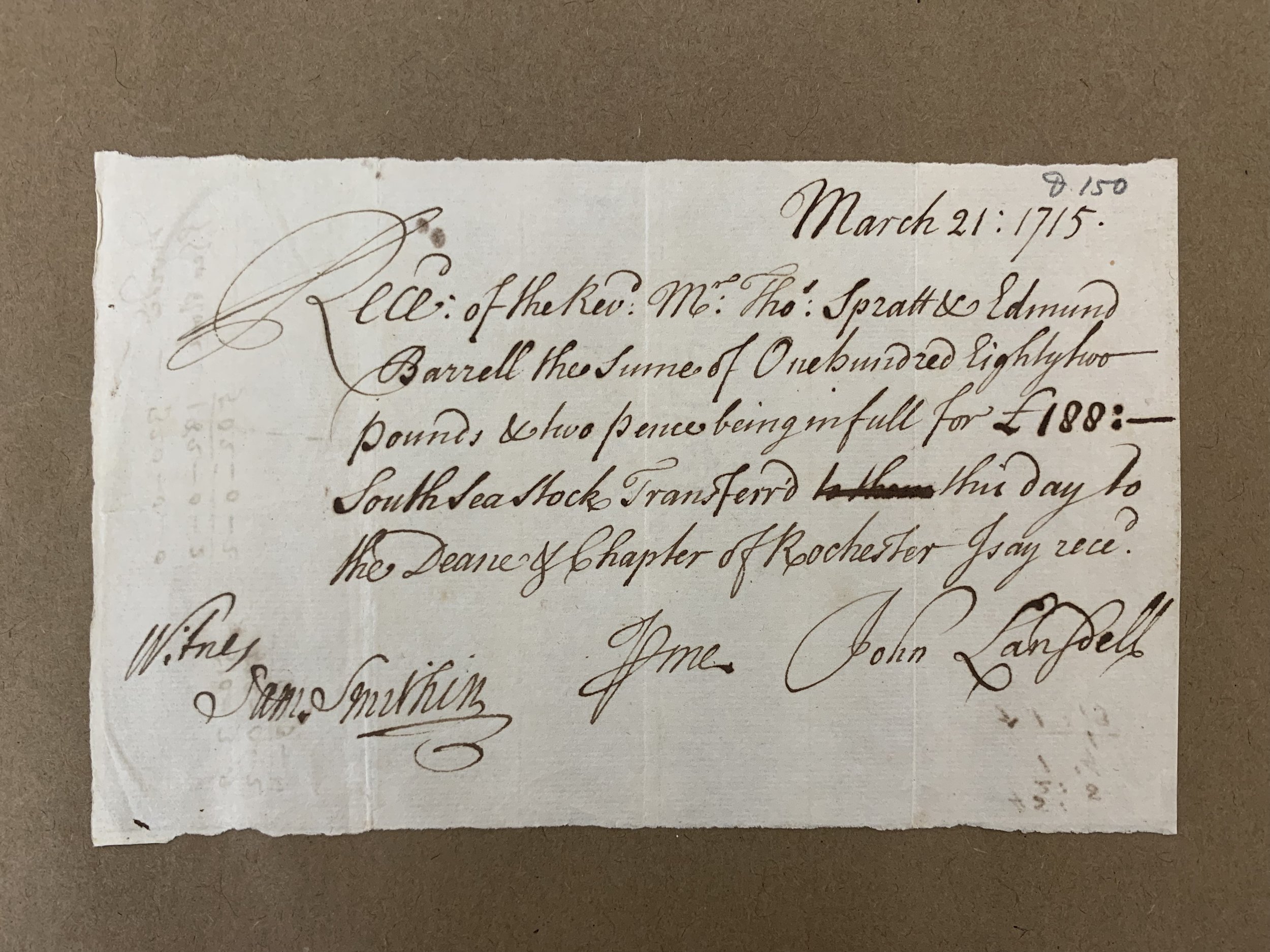
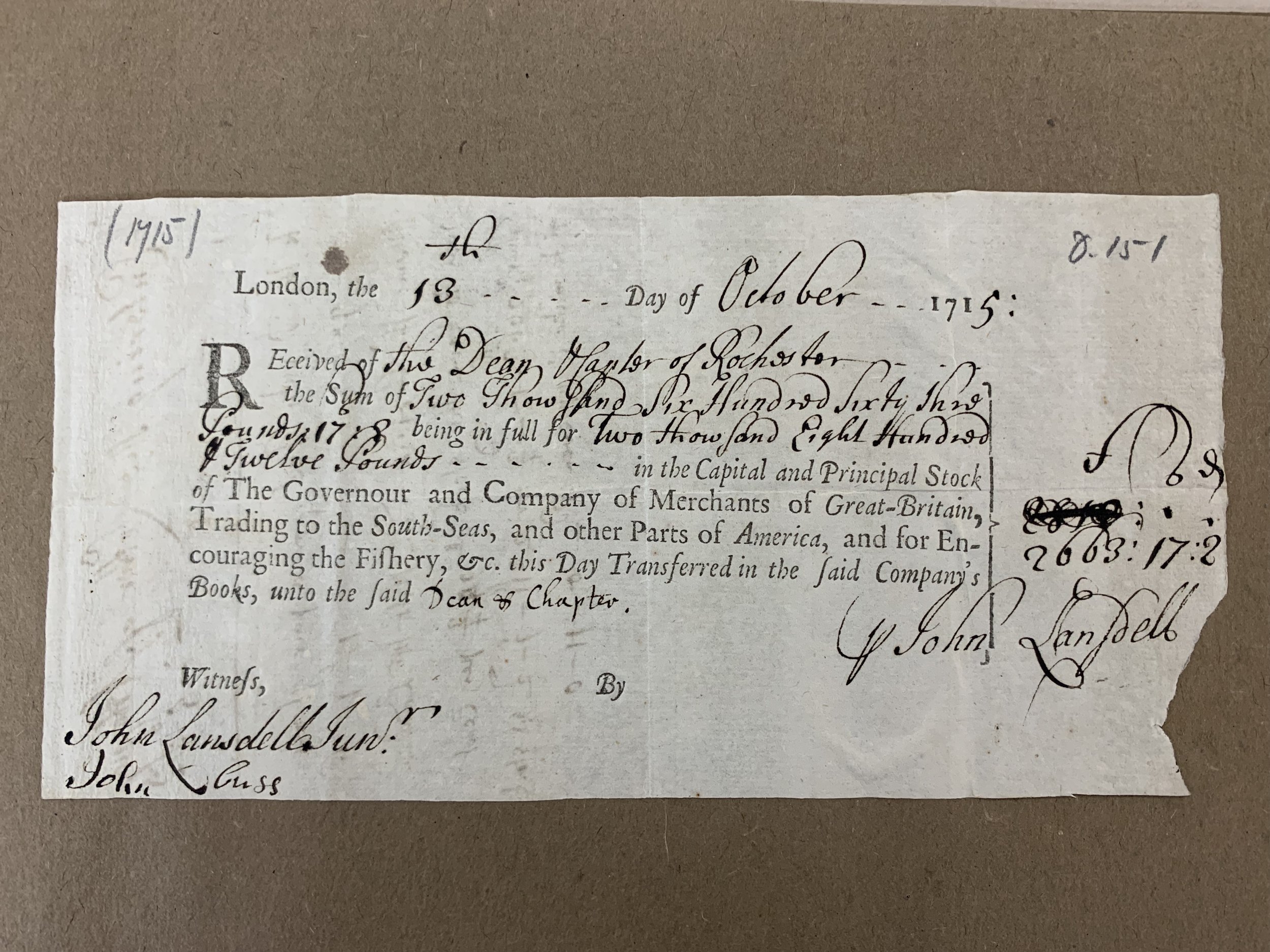
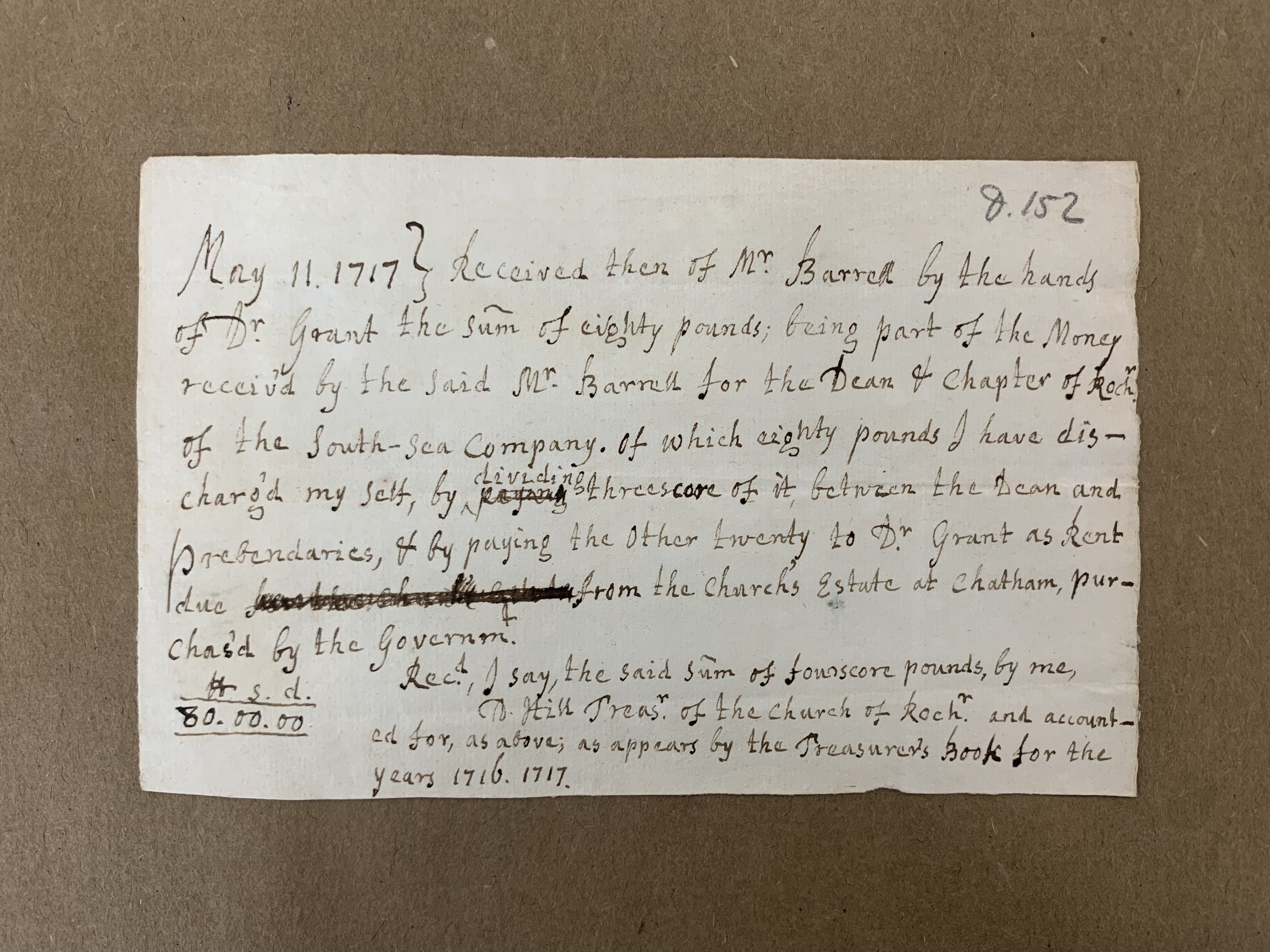
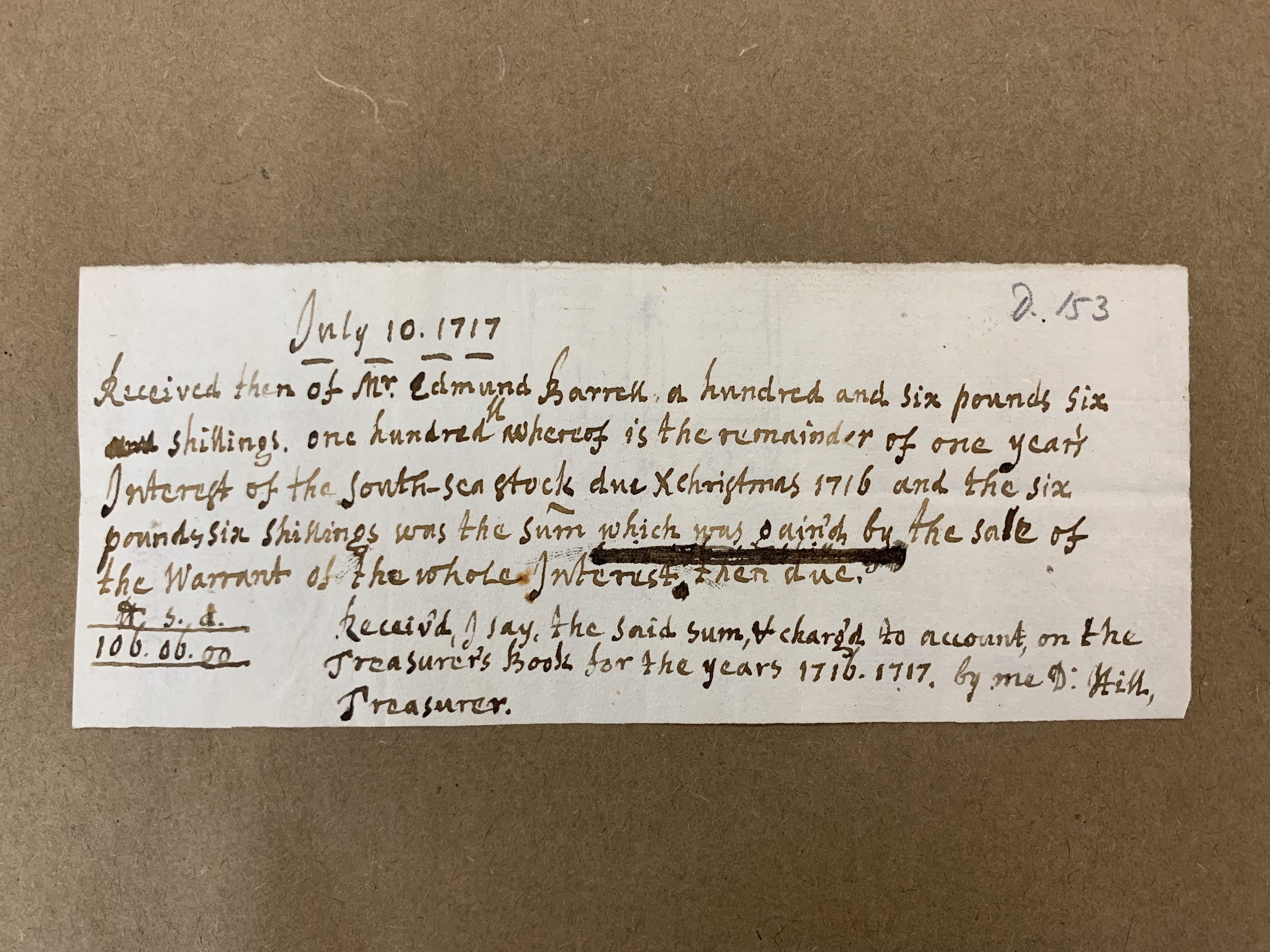
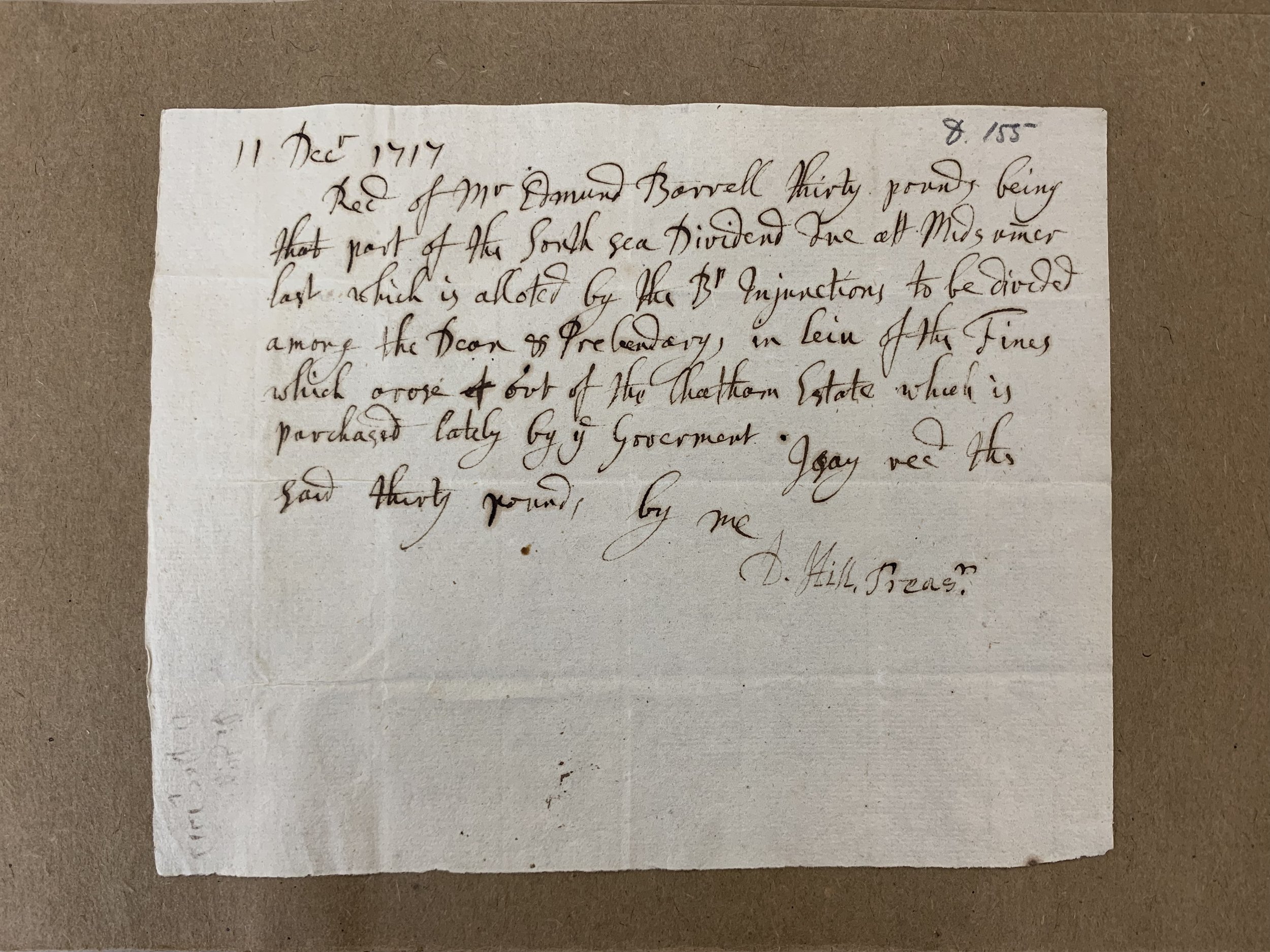
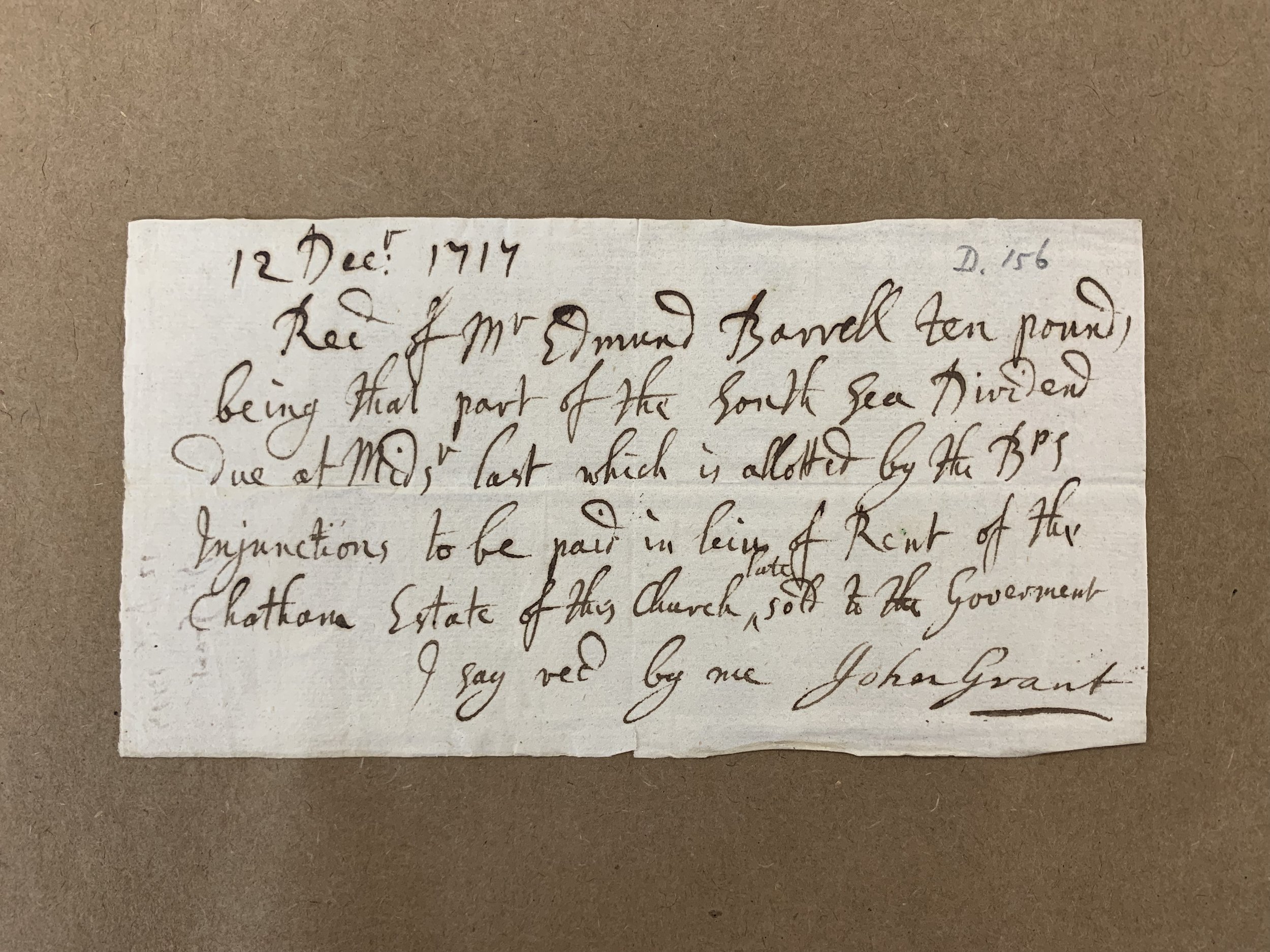
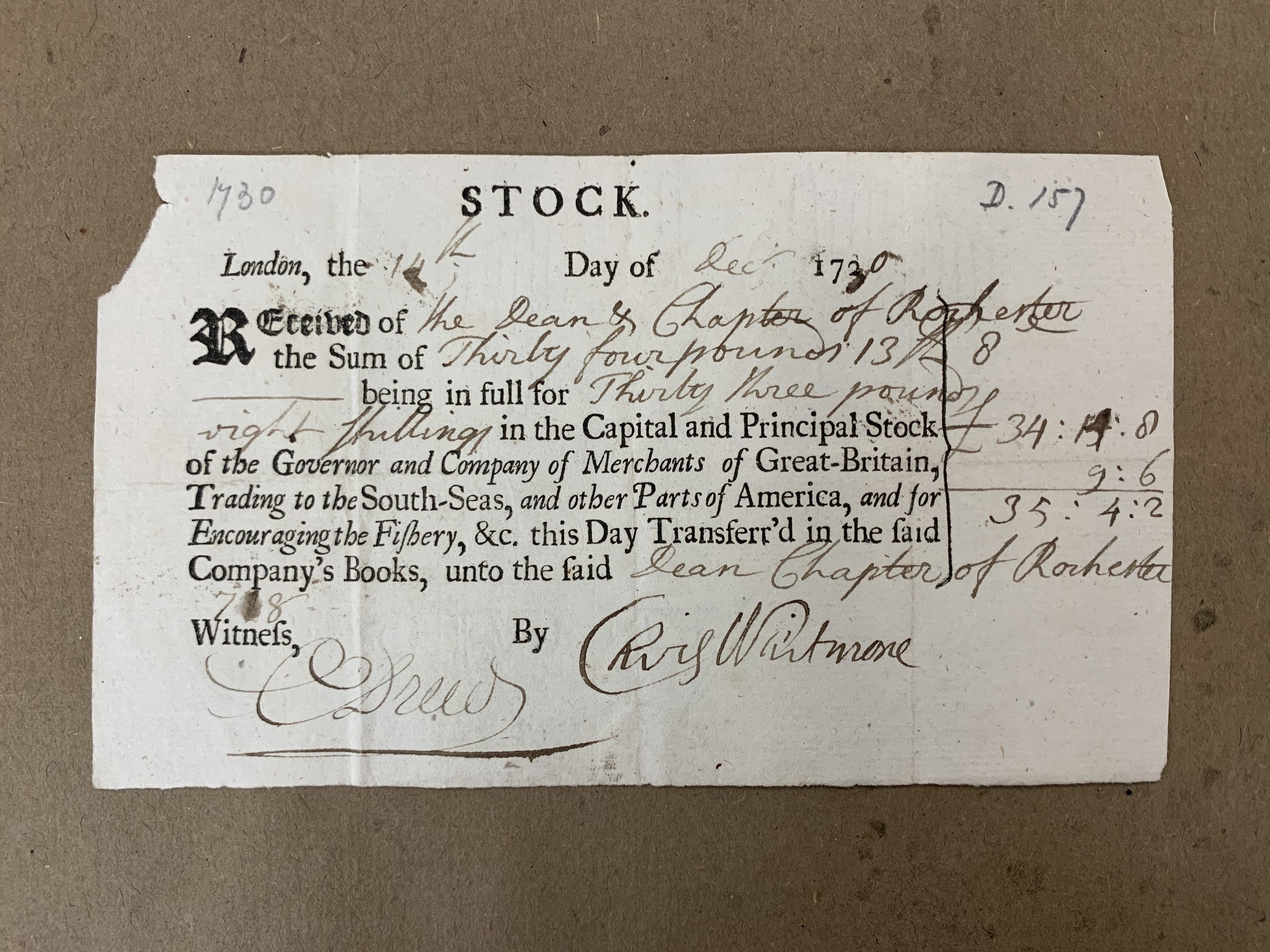
South Sea Company stock and dividend receipts (Medway Archives DRc/FAv). Transcript
The South Seas Company speculative bubble was an early episode of market economics familiar to historians. The South Seas Co. was granted a monopoly on the slave trade with South America in 1713 at the end of the War of the Spanish Succession. Although the subject of considerable political spin after the bursting of the bubble in 1720, the company did see significant activity and was comparatively competent at its task for the time. It has been estimated the company transported just over 34,000 slaves and managed to disembark just under 30,000 in its relatively brief period of operation shortly before the middle of the century (Paul 2009a, 5).
The activities of the company were undertaken with the assistance of both the Royal African Company and the Royal Navy (Paul 2009b). That a Cathedral would have investments in a slave-trading company nonetheless comes as a surprise today, when a century later the Church took an influential stance against slavery (although is apparently not without precedent). The issuance of shares by the company was a state-sanctioned attempt at relieving government debt. Together with the Royal African and East India Companies, these ventures were (and were likely seen as), a form of royal and state investment.
An accounts book from the time of the South Sea Company investments by the auditor Edmund Barrell (DRc/FAs) details the immediate circumstances of the investment and returns, recording a convoluted deposition process to keep track of the interest accumulated. The capital stock of £2,500 bought in 1715-1716 was sold in 1720 to realize £12,270, an almost 400% return equivalent to approximately £2.6 million in 2020 (Bank of England Inflation Calculator).
The ‘South Sea Company money’ accounts book (DRc/Fas). Transcript
The accounts record that the returns were laid out in the purchase of East India bonds, itself involved in the Indian Ocean slave trade at this time, and in the purchase of large estates throughout West Kent and what is now East London; Chatham, Cliffe, Frindsbury, Halstow, Tunstall, Densted, Lyminge, Lympne, Aylesford, Bredhurst, Boxley and West Peckham.
The considerable profit also precipitated many significant maintenance and renovation projects to the Cathedral and The Precinct over the next few decades. Work had started to relead the Cathedral roof in 1705 and seems to have drawn on until its completion in 1727 (DRc/Ftv/70). Within the Cathedral, the Quire was newly paved in Bremen and Portland stone (DRc/Emf/26).
Bremen and Portland stone paving in the Quire. A bill in the archives for Portland and Bremen stone is dated 1742 (DRc/Emf/26).
In 1730, repairs to the fabric ‘including School House’ totalled £234.19.10d (DRc/Ftb/65). Receipts up to 1723 towards the construction of new housing for the Cathedral clergy totalled almost £1,700 (DRc/Arb/2), with a further £250 for the construction of a house for the organist in 1735 (DRc/Emp/3/1). Further works to ‘The Collidge’ and Chapter House were estimated to total £400 in 1735 (DRc/Emf/22/1).
Also in 1730, the old ringers’ loft above the quire steps was removed and the crossing vaulted. This vaulted crossing was removed less than a century later and for a time the crossing featured an undecorated timber ceiling, although retaining a (or possibly the) circular trap door through which the bells would be winched.
The relatively short-lived crossing vault is visible on a pencil drawing produced for ‘Sketches of the Picturesque in Rochester and its Vicinity’ published by Dadson in 1825 (Medway Archives 5208).
The single surviving remnant of this campaign may be a circular trap door with central foliate decoration, preserved in the ringers' loft today.
How far into the mid-18th century the immediate profits from the South Sea Company funded large capital projects is uncertain. In 1748 the rebuilding of the spire was estimated to have cost £170 (DRc/FTv/99). Between1765 and 1772 the west facade towers were demolished down to the level of the nave aisle roofs and crenellations were added to the aisle parapet, filled in the 19 century but still visible from the roofs. The construction of the Old Deanery between 1767 and 1770 came at the conclusion of these eighteenth-century works.
A circa 1860 drawing by Schnebbelie, engraved by A. Warran for Dr Hughson’s Description of London, showing the short-lived crossing tower spire erected in 1748, the truncated west façade towers and the crenellations of the nave aisle parapet added between 1765 and 1772 (DE402/6/7).
That the Dean & Chapter saught fit to invest in a slave-trading company illustrates the growing ubiquity of investments and investors over the 18th century. The University College London Legacies of British Slavery database identifies Canon Richard Bathurst as inheriting a plantation in Jamaica. Reverend Richard Bathurst was a minor canon of Rochester Cathedral. He, his father, wife and daughter are commemorated in a ledger stone in the south nave aisle.
Rev. Bathurst inherited a plantation in Jamaica with 56 slaves; 35 men, 21 women and 8 children. The estate was inherited from his older brother and passed to him from their father Edward Bathurst (UCL 2020). The will of Rev. Bathurst makes no mention of Jamaican property. It cannot be established from these documents what Rev. Bathurst did with the estate after the inheritance.
Slave trade money is not limited to the Cathedral fabric. The finest silverware in the collections was donated by Sir Joseph Williamson (1633-1701).
The Sir Joseph Williamson silverware displayed at the Guildhall Museum, Rochester.
The maker’s marks show that it was produced in London in 1653, passing to Williamson by marriage. He was a prominent philanthropist and founder of the local Sir Joseph Williamson Mathematical School, and an investor and administrator in the Royal African Company holding the monopoly of the English slave trade from Africa to the West Indies. The silverware is no longer used in services and is currently held by the Guildhall Museum, Rochester.
It seems also that slavery was not unknown of within the Cathedral Precincts. On the 3rd December 1713, William Thompson, ‘a Black’, was baptised by the Sacrist William White. The sparcity of accompanying information indicates William may have been an infant born in servitude within the Precinct. Similarly, a burial of an Anthony Mumford on May 30th 1720 is recorded with the same ‘a Black’ describer in place of the typical record of occupation. Read more in Baptism, Marriage, and Burial Registers
Although most works to the Cathedral fabric from this time were replaced in the major redecoration campaigns of the 19th century, the construction of a significant portion of The Precinct as it remains today reveals the long legacy of these investments. Most properties remained within the Cathedral portfolio into the early 21st century, although have subsequently been sold for development as private residences. Perhaps the most surprising legacy from this time, the two mulberry trees in the Cathedral grounds are believed to have been planted in the early 18th century. Their longevity is a vivid example of how wide and deep the roots of slavery became in the 19th century and how alive this heritage can be in our world today.
Investigation of the purchasing and legacy of the East India Company bonds purchased with the proceeds from the South Sea Company investments is ongoing within a wider reinvestigation of the records of Dean & Chapter.
This research is indebted to the staff at the Medway Archives Centre in Strood.
Jacob Scott










